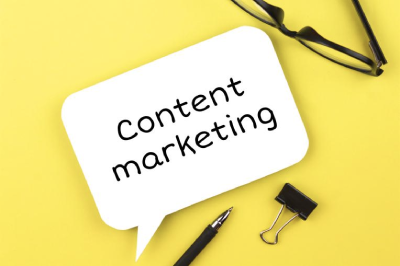What is Content Marketing Automation?
Content marketing automation is the use of tools and workflows to manage, distribute, and measure content with minimal manual effort. This goes beyond scheduling posts. It includes:
- AI-generated content and repurposing
- Smart distribution via email, social, and CRM
- Behavioral triggers (e.g., send X if user clicks Y)
- Lead scoring based on content engagement
- Automated ROI and performance tracking
Whether you’re a startup or enterprise, automation helps you scale production and personalize delivery. To understand the full scope, you can read our What is Content Automation Guide 2025.
Why Automate Content Marketing in 2025?
The market is faster. Budgets are tighter. Teams are leaner. But audiences expect:
- Personalized emails
- Real-time value
- Consistent messaging across platforms
Manual content systems simply can’t keep up. Automation provides:
- Speed: Deliver targeted content instantly (see B2B Marketing Automation Content Funnel for mapping content to each stage of the buyer journey)
- Consistency: Publish across multiple channels on schedule
- Insight: Know which content drives leads and revenue
The 3 Pillars of Content Marketing Automation
1. Automated Content Creation & Optimization
Tools to use: ChatGPT, Jasper, Surfer SEO, ContentShake AI
- Generate SEO blog drafts using prompts
- Rewrite and repurpose content into newsletters, ads, and social
- Optimize with Surfer SEO before publishing
Workflow Example:
Jasper writes a blog draft → Surfer SEO scores and suggests changes → WordPress plugin schedules the post.
2. Multi-Channel Content Distribution
Tools to use: WordPress, Buffer, CoSchedule, Hootsuite, Mailchimp, Brevo
- Automatically post to LinkedIn, Instagram, and Facebook
- Email new blog content to segmented lists
- Set dynamic CTAs based on user engagement
Check out our Top Content Automation Tools 2025 for tools that can streamline multi-channel posting.
Workflow Example:
Blog goes live → Mailchimp sends blog teaser to email list → Buffer shares it on 4 platforms → Brevo triggers retargeting email for readers.
3. Lead Nurturing & ROI Tracking
Tools to use: HubSpot, ActiveCampaign, Pardot, Google Analytics 4
- Lead scoring based on blog views, link clicks, and downloads
- CRM assigns leads to sales based on score
- Reports show revenue tied to a specific blog or funnel stage
Workflow Example:
Someone downloads a whitepaper → Added to “Warm Lead” list → Pardot notifies sales team → Weekly report shows MQL-to-SQL conversion.
Content Marketing Automation Strategy (Template)
| Funnel Stage | Content Type | Tools Used | Automation Action |
| TOFU | SEO Blogs, Social Posts | ChatGPT, Surfer, Buffer | Auto-post weekly, optimize headline hooks |
| MOFU | Emails, Case Studies | Mailchimp, Brevo, Jasper | Trigger email based on scroll depth |
| BOFU | Product Pages, Demos | HubSpot, Pardot | Assign to sales, start CRM sequence |
You can adapt this for any industry. Add landing pages, webinar invites, or pricing calculators into the funnel.
How to Measure ROI of Content Marketing Automation
Here’s what to track:
- Time Saved: Compare hours pre-automation vs post
- Content Output: Number of blogs/posts published monthly
- Leads Generated: New leads per content piece
- Conversion Rates: From view to lead, lead to sale
- Revenue Influence: Content that touched winning deals
Tool Tip: Use UTM parameters + GA4 + CRM analytics to map exact contribution.
How Reliqus Helps You Automate Content with ROI in Mind
Reliqus doesn’t just recommend tools — we build systems. Our services include:
- Audit of your current content workflows
- Mapping your funnel into automated content flows
- Choosing the right stack (SEO, email, CRM, social)
- Creating and optimizing content calendars
- Measuring success beyond vanity metrics
Start today with a Free Consultation to see how we can scale your content automation.
Have questions? Reach out via our Contact Us page to speak with our expert.
Final Takeaway
Content marketing automation in 2025 is no longer optional — it’s your best path to scale without burnout. Use the right tools, build the right workflows, and let automation do the heavy lifting.
With guidance from Reliqus, your content won’t just go live — it’ll generate leads and drive growth.

